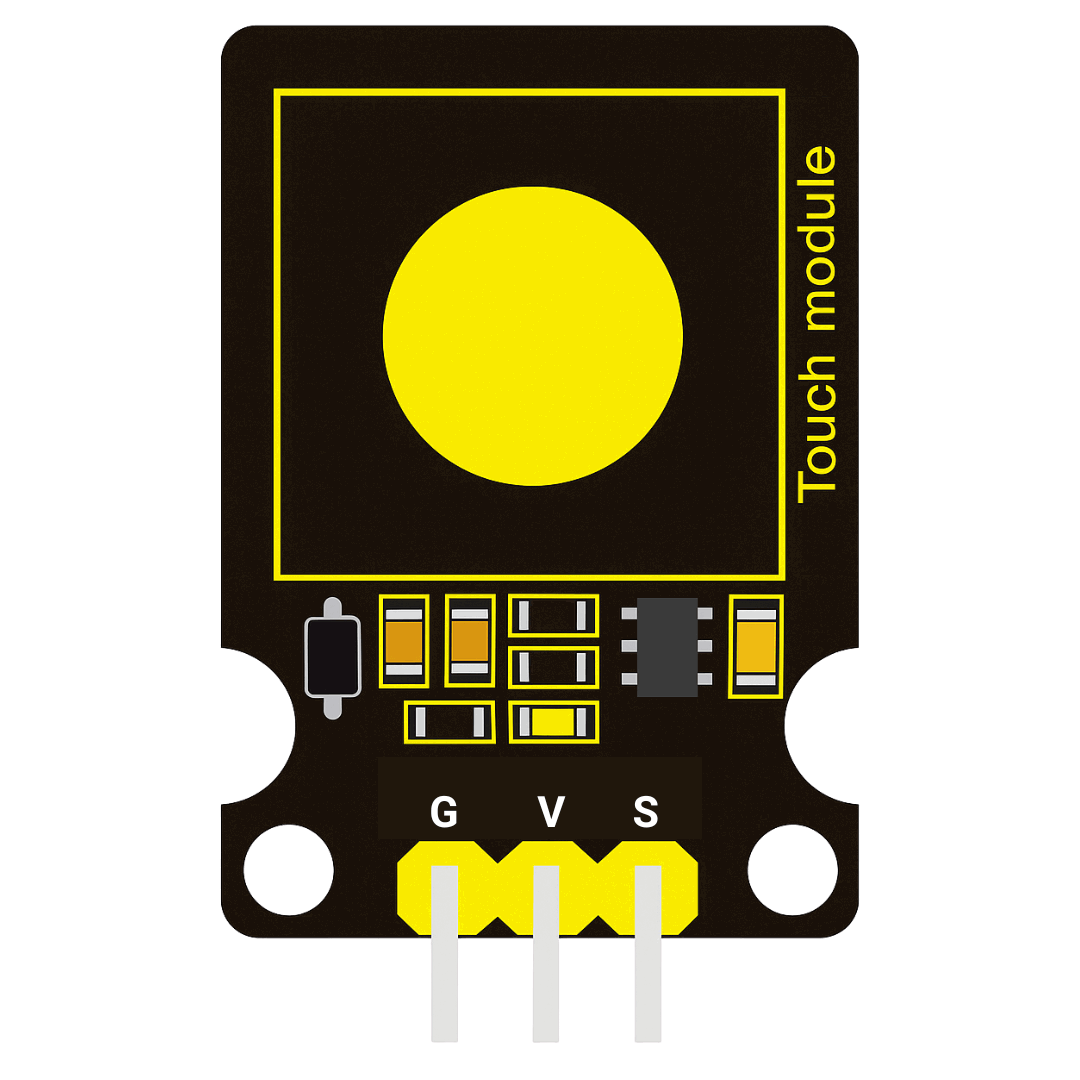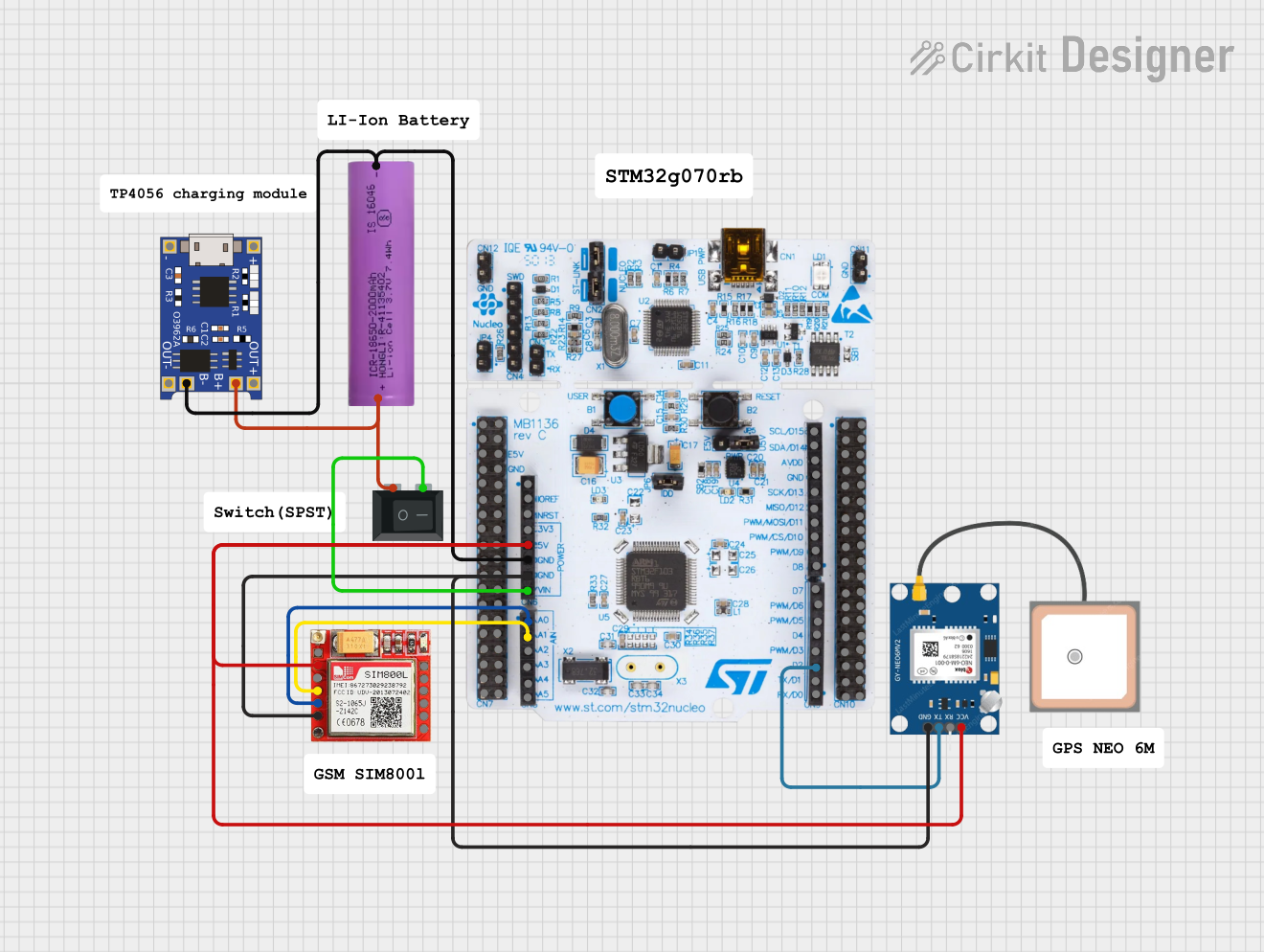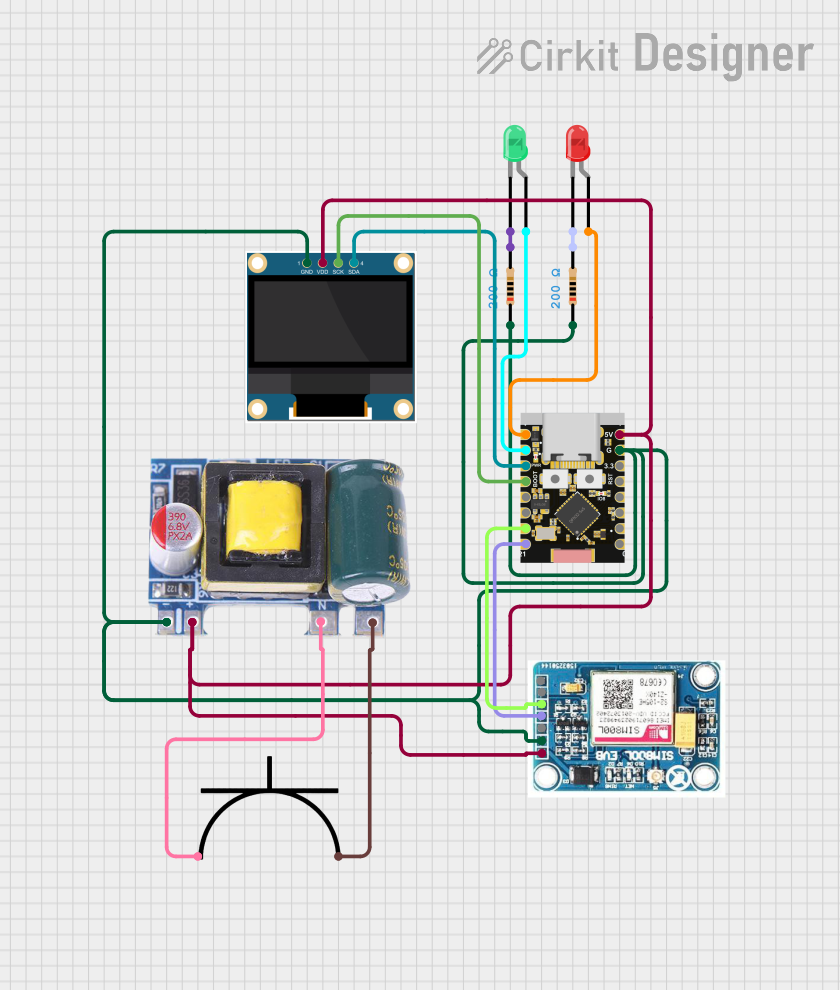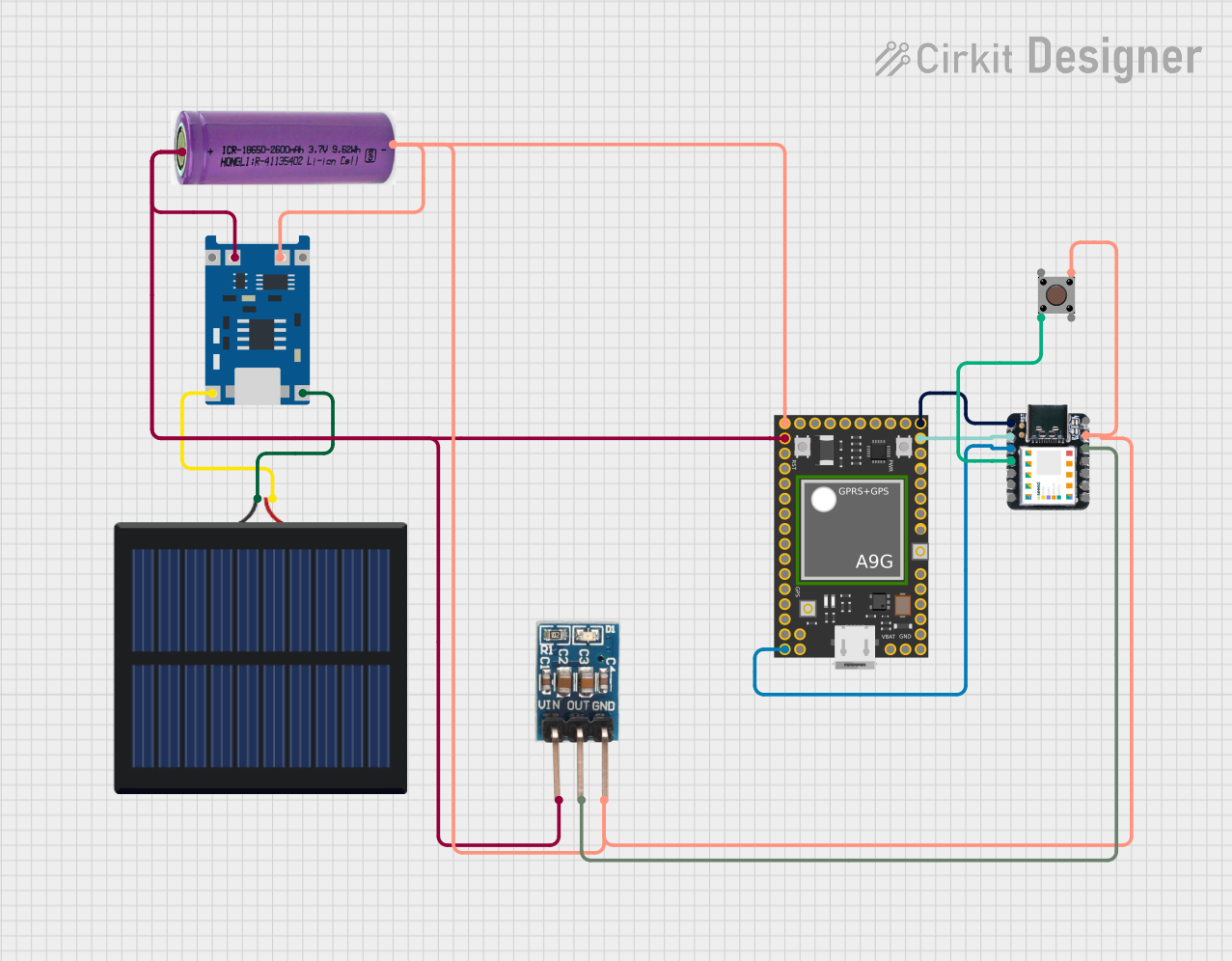
How to Use KS0031: Examples, Pinouts, and Specs

 Design with KS0031 in Cirkit Designer
Design with KS0031 in Cirkit DesignerIntroduction
The KS0031 is a versatile integrated circuit (IC) designed for a wide range of applications, including signal processing, control systems, and general-purpose electronics. With its low power consumption and high performance, the KS0031 is ideal for use in both consumer and industrial electronics. Its robust design and flexibility make it a popular choice for engineers and hobbyists alike.
Explore Projects Built with KS0031

 Open Project in Cirkit Designer
Open Project in Cirkit Designer
 Open Project in Cirkit Designer
Open Project in Cirkit Designer
 Open Project in Cirkit Designer
Open Project in Cirkit Designer
 Open Project in Cirkit Designer
Open Project in Cirkit DesignerExplore Projects Built with KS0031

 Open Project in Cirkit Designer
Open Project in Cirkit Designer
 Open Project in Cirkit Designer
Open Project in Cirkit Designer
 Open Project in Cirkit Designer
Open Project in Cirkit Designer
 Open Project in Cirkit Designer
Open Project in Cirkit DesignerCommon Applications
- Signal processing in audio and communication systems
- Control systems for automation and robotics
- General-purpose logic and timing circuits
- Consumer electronics, such as home appliances
- Industrial electronics, including monitoring and control devices
Technical Specifications
The KS0031 is designed to operate efficiently under a variety of conditions. Below are its key technical specifications:
| Parameter | Value |
|---|---|
| Operating Voltage | 3.3V to 5V |
| Operating Current | 10 mA (typical) |
| Power Consumption | Low power consumption |
| Operating Temperature | -40°C to +85°C |
| Package Type | DIP-8 or SMD |
| Frequency Range | Up to 1 MHz |
Pin Configuration and Descriptions
The KS0031 features an 8-pin configuration. Below is the pinout and description:
| Pin Number | Pin Name | Description |
|---|---|---|
| 1 | VCC | Power supply input (3.3V to 5V) |
| 2 | GND | Ground |
| 3 | IN1 | Input signal 1 |
| 4 | IN2 | Input signal 2 |
| 5 | OUT1 | Output signal 1 |
| 6 | OUT2 | Output signal 2 |
| 7 | ENABLE | Enable/disable control for the IC |
| 8 | NC | No connection (leave unconnected) |
Usage Instructions
The KS0031 is straightforward to use in a variety of circuits. Below are the steps and considerations for integrating it into your design:
Basic Circuit Setup
- Power Supply: Connect the VCC pin (Pin 1) to a stable power source (3.3V to 5V) and the GND pin (Pin 2) to the ground of your circuit.
- Input Signals: Connect your input signals to IN1 (Pin 3) and IN2 (Pin 4). Ensure the input voltage levels are within the operating range of the IC.
- Output Signals: The processed signals will be available at OUT1 (Pin 5) and OUT2 (Pin 6). Connect these pins to the desired load or circuit.
- Enable Control: Use the ENABLE pin (Pin 7) to activate or deactivate the IC. Pull this pin high to enable the IC or low to disable it.
Important Considerations
- Decoupling Capacitor: Place a 0.1 µF ceramic capacitor close to the VCC pin to filter out noise and ensure stable operation.
- Input Protection: Use resistors or diodes to protect the input pins from voltage spikes or overvoltage conditions.
- Thermal Management: Ensure adequate ventilation or heat dissipation if the IC is used in high-temperature environments.
Example: Using KS0031 with Arduino UNO
The KS0031 can be easily interfaced with an Arduino UNO for signal processing or control applications. Below is an example code snippet:
// Example: Interfacing KS0031 with Arduino UNO
// This code demonstrates how to enable the KS0031 and process input signals.
const int enablePin = 7; // Pin connected to KS0031 ENABLE pin
const int input1 = A0; // Analog input connected to KS0031 IN1
const int input2 = A1; // Analog input connected to KS0031 IN2
const int output1 = 9; // PWM output connected to KS0031 OUT1
const int output2 = 10; // PWM output connected to KS0031 OUT2
void setup() {
pinMode(enablePin, OUTPUT); // Set ENABLE pin as output
pinMode(output1, OUTPUT); // Set OUT1 as output
pinMode(output2, OUTPUT); // Set OUT2 as output
digitalWrite(enablePin, HIGH); // Enable the KS0031
}
void loop() {
int signal1 = analogRead(input1); // Read signal from IN1
int signal2 = analogRead(input2); // Read signal from IN2
// Process signals and output PWM signals
analogWrite(output1, signal1 / 4); // Scale 10-bit input to 8-bit output
analogWrite(output2, signal2 / 4); // Scale 10-bit input to 8-bit output
delay(10); // Small delay for stability
}
Notes:
- Ensure the Arduino's power supply matches the KS0031's operating voltage.
- Use appropriate pull-up or pull-down resistors if required for your application.
Troubleshooting and FAQs
Common Issues
No Output Signal:
- Ensure the ENABLE pin is pulled high to activate the IC.
- Verify that the input signals are within the specified voltage range.
Unstable Operation:
- Check the power supply for noise or instability.
- Add a decoupling capacitor near the VCC pin.
Overheating:
- Ensure the IC is not exposed to excessive current or voltage.
- Improve ventilation or add a heatsink if necessary.
Incorrect Output:
- Verify the input connections and ensure they are not swapped.
- Check for loose or faulty connections in the circuit.
FAQs
Q1: Can the KS0031 operate at 12V?
No, the KS0031 is designed to operate within a voltage range of 3.3V to 5V. Exceeding this range may damage the IC.
Q2: What is the maximum frequency the KS0031 can handle?
The KS0031 can handle frequencies up to 1 MHz, making it suitable for most signal processing applications.
Q3: Can I leave unused pins unconnected?
Yes, unused pins such as NC (Pin 8) can be left unconnected. However, ensure that all required pins are properly connected.
Q4: Is the KS0031 compatible with 3.3V logic?
Yes, the KS0031 is compatible with both 3.3V and 5V logic levels, making it versatile for various systems.
By following this documentation, you can effectively integrate and troubleshoot the KS0031 in your projects.